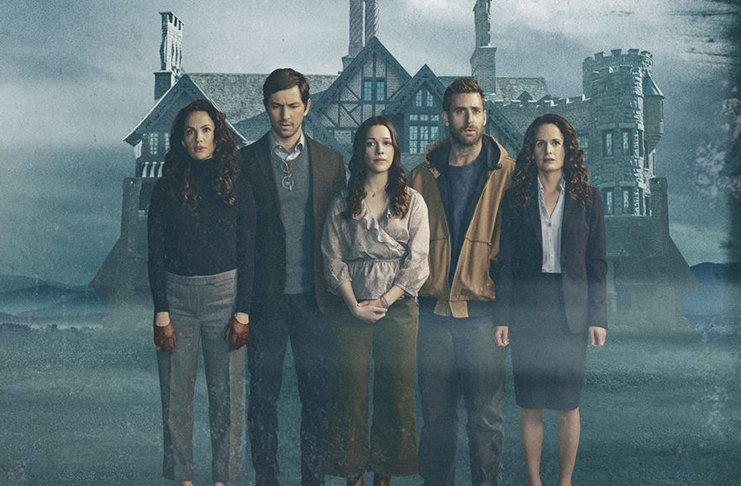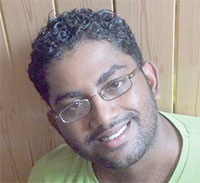HORROR is one of the oldest genres. Humankind has always managed to create elements of the supernatural, built on our fears to prey on our fears. We have always been capable of whipping spirits out of shadows, demons out of the earth, and spirits pulled from the watery depths of the ocean. Given how old horror is, what do filmmakers and writers need to do in order to keep the genre fresh and alive with hauntings and other spooky factors that creep us out and keep us out at night?
The answer lies in humanising the would-be innocent party (or parties) that go up against the villainous ghosts and ghouls. Revealing these hero-type characters has always been an important part of having audiences/readers identify with them throughout the entirety of literary/film history. It is hard to feel the fear/sorrow/joy of the character if we do not relate to the character, if we do not see ourselves as the character.

The special thing about “The Haunting of Hill House” is the way in which this technique is used to the maximum – building characters we want to root for, characters we want to come out of the house alive, but also characters who are so ruthlessly flawed – such hubris-packed heroes and heroines – that it is virtually impossible to not identify with at least one of these characters, and most people seem to identify with all of them at various points throughout the show. “The Haunting of Hill House,” then, piles on the relationship between audience and character, so the emotions and conflicts within the characters affect us in joyously terrifying ways.
The eldest child in the central family terrorised by Hill House is Luke Crain (played well by Daniel Huisman and Paxton Singleton). Luke grows up to ignore his siblings’ tales about the eerie activities in the house (ghosts in the basement, banging on the walls, etc.) and he is the sole representative of the family who seems convinced that his family is not afflicted by the paranormal, but rather, a disease of the mind – a kind of madness that is hereditary. He represents the skeptic within us all. Luke is every one of us who scoffs at the supernatural, choosing to believe in logic and science, while spurning at tales of the paranormal.
This similarity between Luke and a great number of us who watch the show works in the favour of the show because as Luke’s walls come crumbling down with the realisation that his siblings were right all along, it forces us to ask ourselves the question: What if we too, like Luke, are wrong? What if ghosts do exist? What if they live among us, haunting our homes and lives? That in itself is a terrifying thing to contemplate – and when it becomes real for Luke, it momentarily becomes real for us also.
The second sibling is Shirley Crain (played Lulu Wilson in a winsome performance, and then later in an almost perfect performance by Elizabeth Reaser) whose reaction to the ghosts that afflicted her childhood morphs over the course of her life from fear to anger. Shirley’s inability to control the house and the effects it had on her family transformed into a kind of compulsory need for order and control.
It might be read as her attempt to control the disorder and mayhem inflicted on her by the house, by always being in control of every situation presented to her in her adult life. Shirley’s character is interesting because she represents the human belief in doing the opposite of something that will automatically put the world in balance. Later, Shirley and the audience realise that this is false when Shirley’s life is revealed to be riddled with secrets and the ghosts that have never really left start to manifest in her life again.
Shirley’s response of countering disorder with order, life (having a family as an adult) with death (losing an important member of her family as a child), has failed, and this is all the more jarring to the audience because it makes us realise that some forces are so strong that even counter-actions are not strong enough to counter them.
Theo (astoundingly eschewed as a child by Mckenna Grace and then later played by Kate Siegel in a committed performance) the middle child, seems to be the fan-favourite character of the series. This could be because she is highly intelligent and uses her skills (including the ability to learn things about people and objects by touching them) to better the lives of the children she works with.
On the flip side, however, Theo rejects emotions and attachments, building walls all around herself to keep others out. Theo’s response to the horrors of Hill House might be a representative of the human’s ability to protect itself from trauma, particularly of the emotional kind, after having encountered it for the first time. The main death that occurs in Hill House clearly affects all of the Crain children and Theo seems to believe that refusing emotional attachments might be a mechanism to guard her heart against any future pain. Her lesson, the lesson passed on to all of us watching, seems to be that refusing to feel anything is oftentimes more difficult than feeling the harsh emotions, such as sorrow or fear, because in the end, Theo craves feeling and rejects the numbness that she believed could have protected her from the harshness of the real world, as well as the supernatural world.
Luke Crain (played assuredly by Julian Hilliard and Oliver Cohen-Jackson) is the twin brother of Nell Crain (two very strong performances by both Violet McGraw and Victoria Pedretti) – and together, they represent the faction of the Crain family who is most obviously and most pronouncedly affected by the ghosts of Hill House, with the exception of, perhaps, their mother, Olivia, played by the always-fabulous, Carla Gugino, in a scene-stealing, staggeringly good performance.
The twins, as children, are the ones who have to deal with “the bent-neck lady” and the “tall man.” They are the ones who are convinced that what they have seen is real, and they are the ones who often have to deal with the consequences of others’ disbelief. As adults, the twins go their different ways, though each fervently remains committed to their belief in the haunting of Hill House. Luke becomes a drug-user, resorting like many other people around the world who use opioids to deal with his pain.
Nell, on the other hand, never gives up on unravelling the mysteries of Hill House and goes there to find answers. In many ways, this duo highlights the “fight or flight” response – but in metaphorical ways. Luke chooses to fly, to escape his memories, in drugs. Nell, however, chooses to confront the forces at Hill House. Both of them eventually fail against the House; Luke is consumed by his drugs and Nell, like others, is eventually consumed by the house. The “fight or flight” response – the only two options given to characters, in one form or another, throughout all of history, fails the characters in “The Haunting of Hill House,” and what is more terrifying than that?
The ways in which the show allows us to see ourselves in these characters and misleads us into thinking that each character’s response is stronger than the last when it comes to dealing with the supernatural, only to have each of these defence mechanisms crumble before the hungry house is alarming, off-putting, and jarring. It makes us uneasy that the responses of the main characters display the responses we, the viewers, would display and when their responses fail, it is a stark reminder that ours are also not infallible, and being unprotected to the world, to everything seen and unseen, is truly terrifying.



.jpg)








